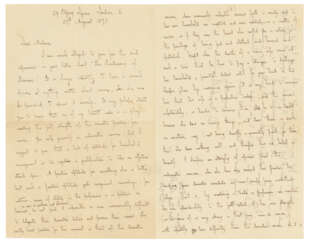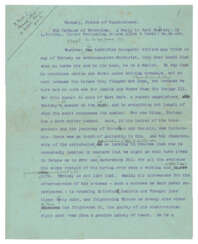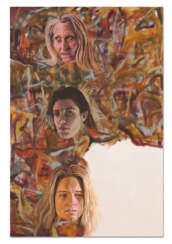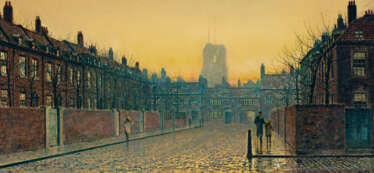shaw

George Bernard Shaw was an Irish playwright, novelist and literary critic, socialist propagandist and journalist, winner of the 1925 Nobel Prize for Literature.
George Bernard was born into a poor noble family and, growing up, suffered greatly from that poverty. After a decade of failure on the literary field, Bernard became an active member of the Fabian Society, a middle-class socialist group founded in 1884, which sought the gradual transformation of English society.
He began working as a journalist and writing plays, which soon enough became popular. In The Man and the Superman, Shaw laid out his philosophy that humanity is the last stage of a purposeful and eternal evolutionary movement of "life force" toward ever higher forms of life. By far his most popular play is Pygmalion, a humane comedy about love and the English class system. But George Bernard Shaw was not only the best comic playwright of his time. Some of his stage works - Caesar and Cleopatra, The Man and Superman, Major Barbara, House of Broken Hearts, and St. Joan - are highly serious and refined in their prose.
Shaw was also a bold pamphleteer, a popular and widely read music and theater critic of his generation, a lecturer and essayist on politics, economics and sociology. In the course of his long and prolific life Bernard Shaw shaped the political, economic and social worldviews of several generations.


Charles Green Shaw was an American artist who painted in the style of abstract expressionism. Shaw began his career as a writer and poet, but later became a painter. In the 1930s he was one of the organizers and members of a group of artists who experimented with abstract art in New York.
He is known for his painting compositions in which he used bright colors and geometric shapes. In the 1940s, Shaw became more interested in abstract art and began painting in the style of Abstract Expressionism. His work included large abstract paintings as well as a series of prints and lithographs.
Shaw was one of the first American artists whose work was recognized in Europe. In the 1950s he was recognized for his work in the genre of Abstract Expressionism and was invited to participate in numerous exhibitions around the world.




Charles Green Shaw was an American artist who painted in the style of abstract expressionism. Shaw began his career as a writer and poet, but later became a painter. In the 1930s he was one of the organizers and members of a group of artists who experimented with abstract art in New York.
He is known for his painting compositions in which he used bright colors and geometric shapes. In the 1940s, Shaw became more interested in abstract art and began painting in the style of Abstract Expressionism. His work included large abstract paintings as well as a series of prints and lithographs.
Shaw was one of the first American artists whose work was recognized in Europe. In the 1950s he was recognized for his work in the genre of Abstract Expressionism and was invited to participate in numerous exhibitions around the world.


Charles Green Shaw was an American artist who painted in the style of abstract expressionism. Shaw began his career as a writer and poet, but later became a painter. In the 1930s he was one of the organizers and members of a group of artists who experimented with abstract art in New York.
He is known for his painting compositions in which he used bright colors and geometric shapes. In the 1940s, Shaw became more interested in abstract art and began painting in the style of Abstract Expressionism. His work included large abstract paintings as well as a series of prints and lithographs.
Shaw was one of the first American artists whose work was recognized in Europe. In the 1950s he was recognized for his work in the genre of Abstract Expressionism and was invited to participate in numerous exhibitions around the world.




George Bernard Shaw was an Irish playwright, novelist and literary critic, socialist propagandist and journalist, winner of the 1925 Nobel Prize for Literature.
George Bernard was born into a poor noble family and, growing up, suffered greatly from that poverty. After a decade of failure on the literary field, Bernard became an active member of the Fabian Society, a middle-class socialist group founded in 1884, which sought the gradual transformation of English society.
He began working as a journalist and writing plays, which soon enough became popular. In The Man and the Superman, Shaw laid out his philosophy that humanity is the last stage of a purposeful and eternal evolutionary movement of "life force" toward ever higher forms of life. By far his most popular play is Pygmalion, a humane comedy about love and the English class system. But George Bernard Shaw was not only the best comic playwright of his time. Some of his stage works - Caesar and Cleopatra, The Man and Superman, Major Barbara, House of Broken Hearts, and St. Joan - are highly serious and refined in their prose.
Shaw was also a bold pamphleteer, a popular and widely read music and theater critic of his generation, a lecturer and essayist on politics, economics and sociology. In the course of his long and prolific life Bernard Shaw shaped the political, economic and social worldviews of several generations.


George Bernard Shaw was an Irish playwright, novelist and literary critic, socialist propagandist and journalist, winner of the 1925 Nobel Prize for Literature.
George Bernard was born into a poor noble family and, growing up, suffered greatly from that poverty. After a decade of failure on the literary field, Bernard became an active member of the Fabian Society, a middle-class socialist group founded in 1884, which sought the gradual transformation of English society.
He began working as a journalist and writing plays, which soon enough became popular. In The Man and the Superman, Shaw laid out his philosophy that humanity is the last stage of a purposeful and eternal evolutionary movement of "life force" toward ever higher forms of life. By far his most popular play is Pygmalion, a humane comedy about love and the English class system. But George Bernard Shaw was not only the best comic playwright of his time. Some of his stage works - Caesar and Cleopatra, The Man and Superman, Major Barbara, House of Broken Hearts, and St. Joan - are highly serious and refined in their prose.
Shaw was also a bold pamphleteer, a popular and widely read music and theater critic of his generation, a lecturer and essayist on politics, economics and sociology. In the course of his long and prolific life Bernard Shaw shaped the political, economic and social worldviews of several generations.


Charles Green Shaw was an American artist who painted in the style of abstract expressionism. Shaw began his career as a writer and poet, but later became a painter. In the 1930s he was one of the organizers and members of a group of artists who experimented with abstract art in New York.
He is known for his painting compositions in which he used bright colors and geometric shapes. In the 1940s, Shaw became more interested in abstract art and began painting in the style of Abstract Expressionism. His work included large abstract paintings as well as a series of prints and lithographs.
Shaw was one of the first American artists whose work was recognized in Europe. In the 1950s he was recognized for his work in the genre of Abstract Expressionism and was invited to participate in numerous exhibitions around the world.




Charles Green Shaw was an American artist who painted in the style of abstract expressionism. Shaw began his career as a writer and poet, but later became a painter. In the 1930s he was one of the organizers and members of a group of artists who experimented with abstract art in New York.
He is known for his painting compositions in which he used bright colors and geometric shapes. In the 1940s, Shaw became more interested in abstract art and began painting in the style of Abstract Expressionism. His work included large abstract paintings as well as a series of prints and lithographs.
Shaw was one of the first American artists whose work was recognized in Europe. In the 1950s he was recognized for his work in the genre of Abstract Expressionism and was invited to participate in numerous exhibitions around the world.


Jim Shaw is an American artist. His work is held in the collections of the Metropolitan Museum of Art and the Museum of Modern Art, New York.


Charles Green Shaw was an American artist who painted in the style of abstract expressionism. Shaw began his career as a writer and poet, but later became a painter. In the 1930s he was one of the organizers and members of a group of artists who experimented with abstract art in New York.
He is known for his painting compositions in which he used bright colors and geometric shapes. In the 1940s, Shaw became more interested in abstract art and began painting in the style of Abstract Expressionism. His work included large abstract paintings as well as a series of prints and lithographs.
Shaw was one of the first American artists whose work was recognized in Europe. In the 1950s he was recognized for his work in the genre of Abstract Expressionism and was invited to participate in numerous exhibitions around the world.
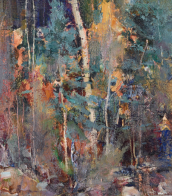

Jim Shaw is an American artist. His work is held in the collections of the Metropolitan Museum of Art and the Museum of Modern Art, New York.




Jim Shaw is an American artist. His work is held in the collections of the Metropolitan Museum of Art and the Museum of Modern Art, New York.
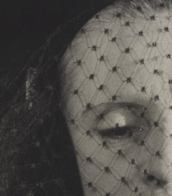

Jim Shaw is an American artist. His work is held in the collections of the Metropolitan Museum of Art and the Museum of Modern Art, New York.

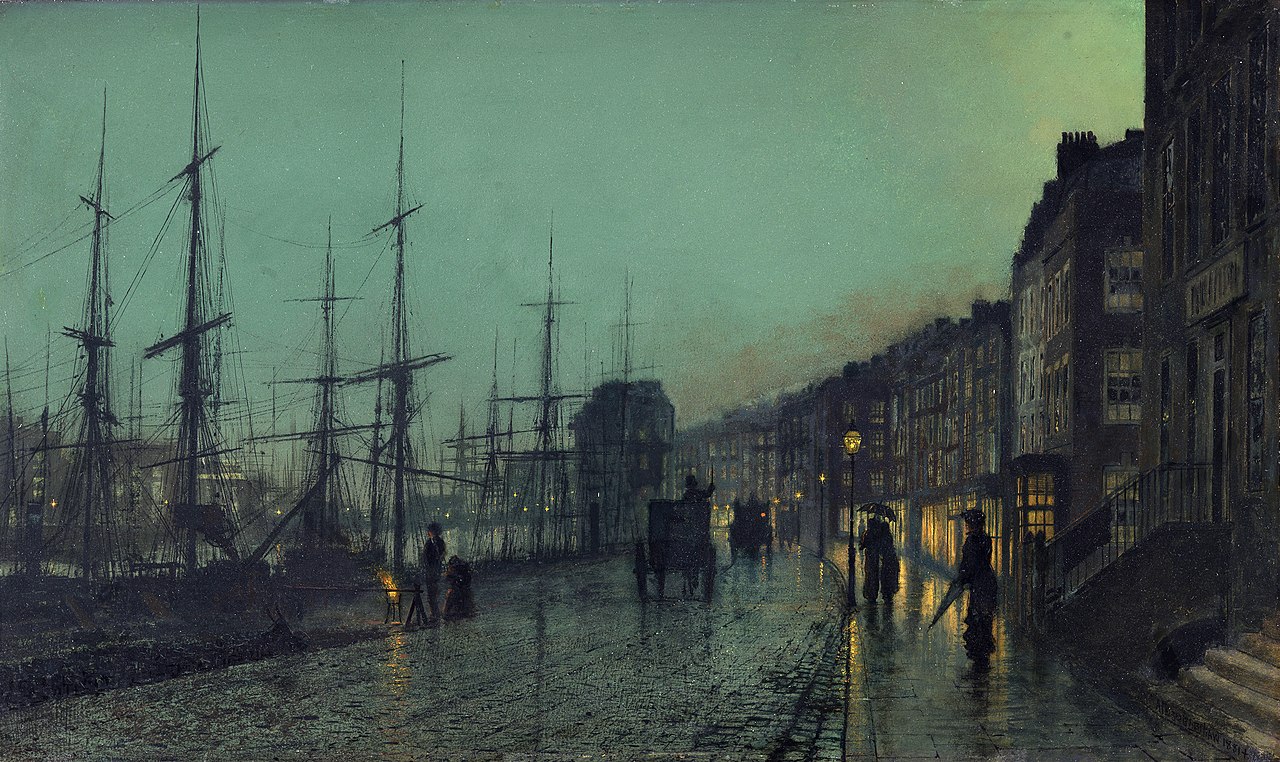
John Atkinson Grimshaw was an English Victorian-era artist best known for his nocturnal scenes of urban landscapes. He was called a «remarkable and imaginative painter» by the critic and historian Christopher Wood in Victorian Painting (1999).
Grimshaw's love for realism stemmed from a passion for photography, which would eventually lend itself to the creative process. Though entirely self-taught, he is known to have used a camera obscura or lenses to project scenes onto canvas, which made up for his shortcomings as a draughtsman and his imperfect knowledge of perspective. This technique, which Caravaggio and Vermeer may also have used, was condemned by a number of his contemporaries who believed it demonstrated less skill than painting by eye, with some claiming that his paintings appeared to «show no marks of handling or brushwork», while others "were doubtful whether they could be accepted as paintings at all". However, many recognised his mastery of colour, lighting and shadow, as well as his unique ability to provoke strong emotional responses in the viewer. James McNeill Whistler, who Grimshaw worked with in his Chelsea studios, stated, «I considered myself the inventor of nocturnes until I saw Grimmy's moonlit pictures».


John Atkinson Grimshaw was an English Victorian-era artist best known for his nocturnal scenes of urban landscapes. He was called a «remarkable and imaginative painter» by the critic and historian Christopher Wood in Victorian Painting (1999).
Grimshaw's love for realism stemmed from a passion for photography, which would eventually lend itself to the creative process. Though entirely self-taught, he is known to have used a camera obscura or lenses to project scenes onto canvas, which made up for his shortcomings as a draughtsman and his imperfect knowledge of perspective. This technique, which Caravaggio and Vermeer may also have used, was condemned by a number of his contemporaries who believed it demonstrated less skill than painting by eye, with some claiming that his paintings appeared to «show no marks of handling or brushwork», while others "were doubtful whether they could be accepted as paintings at all". However, many recognised his mastery of colour, lighting and shadow, as well as his unique ability to provoke strong emotional responses in the viewer. James McNeill Whistler, who Grimshaw worked with in his Chelsea studios, stated, «I considered myself the inventor of nocturnes until I saw Grimmy's moonlit pictures».


John Atkinson Grimshaw was an English Victorian-era artist best known for his nocturnal scenes of urban landscapes. He was called a «remarkable and imaginative painter» by the critic and historian Christopher Wood in Victorian Painting (1999).
Grimshaw's love for realism stemmed from a passion for photography, which would eventually lend itself to the creative process. Though entirely self-taught, he is known to have used a camera obscura or lenses to project scenes onto canvas, which made up for his shortcomings as a draughtsman and his imperfect knowledge of perspective. This technique, which Caravaggio and Vermeer may also have used, was condemned by a number of his contemporaries who believed it demonstrated less skill than painting by eye, with some claiming that his paintings appeared to «show no marks of handling or brushwork», while others "were doubtful whether they could be accepted as paintings at all". However, many recognised his mastery of colour, lighting and shadow, as well as his unique ability to provoke strong emotional responses in the viewer. James McNeill Whistler, who Grimshaw worked with in his Chelsea studios, stated, «I considered myself the inventor of nocturnes until I saw Grimmy's moonlit pictures».


John Atkinson Grimshaw was an English Victorian-era artist best known for his nocturnal scenes of urban landscapes. He was called a «remarkable and imaginative painter» by the critic and historian Christopher Wood in Victorian Painting (1999).
Grimshaw's love for realism stemmed from a passion for photography, which would eventually lend itself to the creative process. Though entirely self-taught, he is known to have used a camera obscura or lenses to project scenes onto canvas, which made up for his shortcomings as a draughtsman and his imperfect knowledge of perspective. This technique, which Caravaggio and Vermeer may also have used, was condemned by a number of his contemporaries who believed it demonstrated less skill than painting by eye, with some claiming that his paintings appeared to «show no marks of handling or brushwork», while others "were doubtful whether they could be accepted as paintings at all". However, many recognised his mastery of colour, lighting and shadow, as well as his unique ability to provoke strong emotional responses in the viewer. James McNeill Whistler, who Grimshaw worked with in his Chelsea studios, stated, «I considered myself the inventor of nocturnes until I saw Grimmy's moonlit pictures».


John Atkinson Grimshaw was an English Victorian-era artist best known for his nocturnal scenes of urban landscapes. He was called a «remarkable and imaginative painter» by the critic and historian Christopher Wood in Victorian Painting (1999).
Grimshaw's love for realism stemmed from a passion for photography, which would eventually lend itself to the creative process. Though entirely self-taught, he is known to have used a camera obscura or lenses to project scenes onto canvas, which made up for his shortcomings as a draughtsman and his imperfect knowledge of perspective. This technique, which Caravaggio and Vermeer may also have used, was condemned by a number of his contemporaries who believed it demonstrated less skill than painting by eye, with some claiming that his paintings appeared to «show no marks of handling or brushwork», while others "were doubtful whether they could be accepted as paintings at all". However, many recognised his mastery of colour, lighting and shadow, as well as his unique ability to provoke strong emotional responses in the viewer. James McNeill Whistler, who Grimshaw worked with in his Chelsea studios, stated, «I considered myself the inventor of nocturnes until I saw Grimmy's moonlit pictures».


Shaweesh is a contemporary painter from Saudi Arabia. Shaweesh is a mixed-media artist who articulates the cultural diffusions between Saudi Arabia and the global community throughout history, measuring this intercultural dialogue through both visual arts and digital design. With the onset of the internet age, Shaweesh began using the web as a gateway into a new inspiration, as he incoroporated Pop Art and Western-branded graphics into his creations. In his newest series, he superimposes US cultural symbols ranging from Captain America to Darth Vader onto famous historical events. Growing up watching Western cartoons as a child while visiting his friends’ houses, he has incorporated this childlike humor into his work. While visiting street vendors in Riyadh, he bought old newspapers dating back to key years referring to Western and Saudi foreign relations. Evolving into a satirical harmony by addressing Saudi historical narratives, he then digitally incorporates cartoon heroes whose personas range from leaders, mentors and organizers, as they correlate to the initiatives raised at these historical events.


Shaweesh is a contemporary painter from Saudi Arabia. Shaweesh is a mixed-media artist who articulates the cultural diffusions between Saudi Arabia and the global community throughout history, measuring this intercultural dialogue through both visual arts and digital design. With the onset of the internet age, Shaweesh began using the web as a gateway into a new inspiration, as he incoroporated Pop Art and Western-branded graphics into his creations. In his newest series, he superimposes US cultural symbols ranging from Captain America to Darth Vader onto famous historical events. Growing up watching Western cartoons as a child while visiting his friends’ houses, he has incorporated this childlike humor into his work. While visiting street vendors in Riyadh, he bought old newspapers dating back to key years referring to Western and Saudi foreign relations. Evolving into a satirical harmony by addressing Saudi historical narratives, he then digitally incorporates cartoon heroes whose personas range from leaders, mentors and organizers, as they correlate to the initiatives raised at these historical events.


John Atkinson Grimshaw was an English Victorian-era artist best known for his nocturnal scenes of urban landscapes. He was called a «remarkable and imaginative painter» by the critic and historian Christopher Wood in Victorian Painting (1999).
Grimshaw's love for realism stemmed from a passion for photography, which would eventually lend itself to the creative process. Though entirely self-taught, he is known to have used a camera obscura or lenses to project scenes onto canvas, which made up for his shortcomings as a draughtsman and his imperfect knowledge of perspective. This technique, which Caravaggio and Vermeer may also have used, was condemned by a number of his contemporaries who believed it demonstrated less skill than painting by eye, with some claiming that his paintings appeared to «show no marks of handling or brushwork», while others "were doubtful whether they could be accepted as paintings at all". However, many recognised his mastery of colour, lighting and shadow, as well as his unique ability to provoke strong emotional responses in the viewer. James McNeill Whistler, who Grimshaw worked with in his Chelsea studios, stated, «I considered myself the inventor of nocturnes until I saw Grimmy's moonlit pictures».


John Atkinson Grimshaw was an English Victorian-era artist best known for his nocturnal scenes of urban landscapes. He was called a «remarkable and imaginative painter» by the critic and historian Christopher Wood in Victorian Painting (1999).
Grimshaw's love for realism stemmed from a passion for photography, which would eventually lend itself to the creative process. Though entirely self-taught, he is known to have used a camera obscura or lenses to project scenes onto canvas, which made up for his shortcomings as a draughtsman and his imperfect knowledge of perspective. This technique, which Caravaggio and Vermeer may also have used, was condemned by a number of his contemporaries who believed it demonstrated less skill than painting by eye, with some claiming that his paintings appeared to «show no marks of handling or brushwork», while others "were doubtful whether they could be accepted as paintings at all". However, many recognised his mastery of colour, lighting and shadow, as well as his unique ability to provoke strong emotional responses in the viewer. James McNeill Whistler, who Grimshaw worked with in his Chelsea studios, stated, «I considered myself the inventor of nocturnes until I saw Grimmy's moonlit pictures».


John Atkinson Grimshaw was an English Victorian-era artist best known for his nocturnal scenes of urban landscapes. He was called a «remarkable and imaginative painter» by the critic and historian Christopher Wood in Victorian Painting (1999).
Grimshaw's love for realism stemmed from a passion for photography, which would eventually lend itself to the creative process. Though entirely self-taught, he is known to have used a camera obscura or lenses to project scenes onto canvas, which made up for his shortcomings as a draughtsman and his imperfect knowledge of perspective. This technique, which Caravaggio and Vermeer may also have used, was condemned by a number of his contemporaries who believed it demonstrated less skill than painting by eye, with some claiming that his paintings appeared to «show no marks of handling or brushwork», while others "were doubtful whether they could be accepted as paintings at all". However, many recognised his mastery of colour, lighting and shadow, as well as his unique ability to provoke strong emotional responses in the viewer. James McNeill Whistler, who Grimshaw worked with in his Chelsea studios, stated, «I considered myself the inventor of nocturnes until I saw Grimmy's moonlit pictures».

